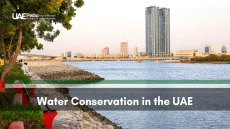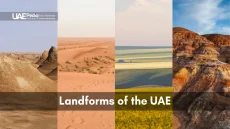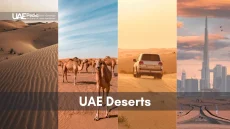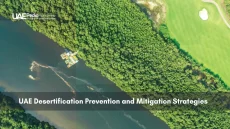What secrets lie beneath the sands and waters of the United Arab Emirates? How does a nation known for its modern cities support such a diverse array of wildlife? The UAE’s landscape is far more than meets the eye. It boasts an impressive 14% of its territory dedicated to nature reserves.
This commitment to conservation has created a mosaic of habitats. From scorching deserts to lush wetlands, each teems with unique species. But how do these varied ecosystems coexist in a country often associated with arid conditions?
The UAE’s natural habitats are as diverse as they are surprising. With four major ecosystem types – desert, mountain, coastal and marine, and wetlands – the country provides homes for an astonishing variety of wildlife. The Arabian Gulf alone harbors over 500 fish species.
Not to mention sizeable populations of dugongs, dolphins, and marine turtles. On land, conservation efforts have led to remarkable successes. For example, the Arabian Oryx population has been revived. These UAE wildlife conservation areas showcase the nation’s commitment to preserving its natural heritage.
From the Dubai Desert Conservation Reserve to the Mangrove National Park in Abu Dhabi, the UAE’s protected wildlife zones offer sanctuaries for countless species. The country’s dedication to biodiversity is further evidenced by its 10 Ramsar sites – wetlands of international importance covering over 39,000 hectares. As we explore the intricate tapestry of species habitats in UAE, we’ll uncover how this nation balances rapid development with steadfast environmental stewardship.
Overview of UAE’s Ecological Landscape
The United Arab Emirates has many different habitats. It shows the country’s rich biodiversity. From big deserts to mountains and coastlines, the UAE’s geography supports many ecosystems.
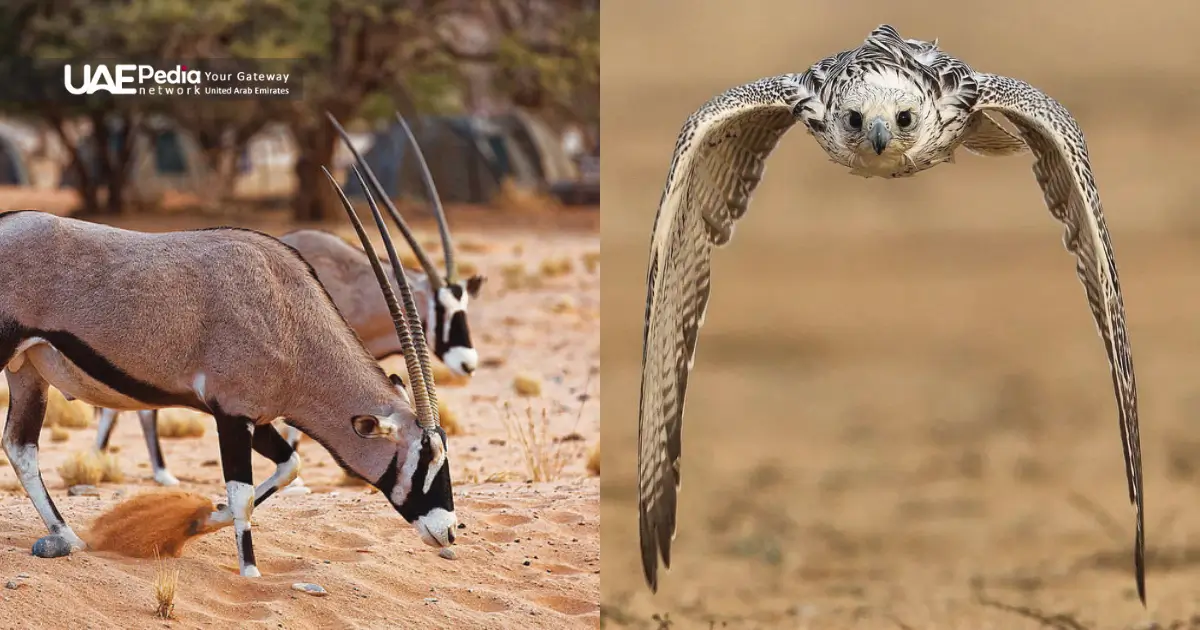
Geographic Distribution and Unique Features
The UAE’s landscape is vast and varied. It has big deserts, tall sand dunes, and rocky mountains. The Hajar Mountains reach up to 2,000 meters, with wadis leading to fertile plains.
Key Ecological Zones
The UAE has desert, mountain, coastal, and wetland ecosystems. The desert is the biggest, covering from the Arabian Gulf to the Empty Quarter. Coastal areas have coral reefs, seagrass beds, and mangroves, which are key for marine life.
The Al Wathba Wetland Reserve is home to about 4,000 flamingos each winter. This shows how important it is to preserve UAE habitats.
Climate Impact on Habitat Formation
The UAE’s dry climate makes its habitats unique. Plants like the Ghaf tree and Date Palm have learned to live in tough conditions. Animals like the Arabian Oryx and Arabian Tahr have also adapted to survive in extreme environments.
The UAE works hard to protect these diverse ecosystems. It has many protected areas to keep them safe for the future.
| Ecosystem | Key Species | Conservation Area |
|---|---|---|
| Desert | Arabian Oryx, Ghaf tree | Dubai Desert Conservation Reserve |
| Mountain | Arabian Tahr, Wild Olive | Hajar Mountains Protected Area |
| Coastal | Dugong, Hawksbill Turtle | Mangroves National Park |
| Wetland | Flamingos, Sociable Lapwing | Al Wathba Wetland Reserve |
Wildlife Habitats in UAE
The UAE has many different wildlife areas. Each one has its own plants and animals. From dry deserts to green wetlands, these places show the UAE’s rich variety of life.
Desert Ecosystems
The UAE’s deserts are home to tough animals. The Dubai Desert Conservation Reserve helps protect these animals. Here, you can see falcons, oryx, and gazelles living in the wild.
Mountain Habitats
The UAE’s mountains are a safe place for many animals. These mountains are important for keeping wildlife safe. The Hajar Mountains, for example, used to have Arabian leopards.
Coastal and Marine Environments
The UAE’s coast is full of life. The sea around here has the most Indian Ocean humpback dolphins in the world. It also has a big dugong population, second only to Australia’s.
Wetland Areas
Wetlands are key for UAE’s wildlife. The Al Wathba Wetland Reserve in Abu Dhabi is a great example. It has over 250 bird species and lots of other water animals. It’s a home for pink flamingos and a stop for birds migrating.
| Habitat Type | Key Features | Notable Species |
|---|---|---|
| Desert | Arid, sparse vegetation | Arabian oryx, falcons |
| Mountain | Rugged terrain, cooler climate | Arabian tahr, striped hyena |
| Coastal/Marine | Diverse underwater ecosystems | Dugongs, sea turtles |
| Wetland | Water-rich environments | Flamingos, migratory birds |
The UAE works hard to keep these habitats safe. It has 49 protected areas on land and sea. These cover a big part of the UAE, protecting wildlife for the future.
Marine Biodiversity Hotspots
The United Arab Emirates has a rich marine ecosystem. It stretches over 2,390 km of coastline. The Arabian Gulf and the Sea of Oman are home to it.
More than 40 species of coral reefs live here. They are nurseries, shelters, and food sources for many marine creatures.
Abu Dhabi’s southwest waters, Marawah Marine Biosphere Reserve, Jebel Ali in Dubai, Sir Bu Na’air Island, and Khor Kalba in Sharjah are key spots. They protect beaches and help fight climate change.
The Arabian Gulf waters are full of marine life. Dugongs, eight dolphin species, and marine turtles live here. Green turtles and hawksbill turtles are especially common.
The UAE’s waters also have seven species of sea snakes. They all belong to the Hydrophiidae family.
| Marine Species | Population/Diversity | Location |
|---|---|---|
| Green Turtles | 6,732 (estimated) | Abu Dhabi waters |
| Dugongs | 3,000 (approx.) | Abu Dhabi |
| Dolphins | 700+ | Abu Dhabi |
| Coral Reefs | 502 sq km | Abu Dhabi |
| Sea Snakes | 4 species | Abu Dhabi |
Conservation efforts are underway in the UAE. The Environment Agency – Abu Dhabi manages six marine reserves. These cover 13.9% of Abu Dhabi’s marine area.
These efforts aim to protect the UAE’s marine life for the future.
Protected Areas and Conservation Zones
The United Arab Emirates is in the heart of West Asia. It has made big steps in protecting its ecosystems. The UAE has 43 federal protected areas, covering 12% of marine and coastal regions and 16% of land.
National Parks and Reserves
The UAE’s national parks are full of different habitats. From arid deserts to lush coastal wetlands, they are amazing. The Dubai Desert Conservation Reserve is a key place for the Arabian oryx and desert fox.
In Ajman, the Al Zorah Mangrove is home to many birds and fish. It shows the emirate’s rich biodiversity.
Marine Protected Areas
Marine conservation is big along the Persian Gulf coast. The Marawah Marine Biosphere Reserve in Abu Dhabi is the UAE’s biggest marine protected area. In Dubai, the Ras Al Khor Wildlife Sanctuary is a key spot for migratory birds.
Flamingos are a big attraction there. These places are key to keeping the Middle East’s marine ecosystems safe.
Conservation Management Strategies
The UAE does more than just protect areas. It has grown its forest areas from 245,000 hectares in 1990 to 318,360 hectares in 2011. The UAE Smart Map of Natural Capital, started in 2014, helps use resources wisely.
The Nature Conservation Festival, launched by Al Ain Zoo and the Ministry of Climate Change and Environment, fights illegal wildlife trade. It also raises awareness. These efforts help protect and reintroduce endangered species, keeping the UAE’s nature alive for future generations.




